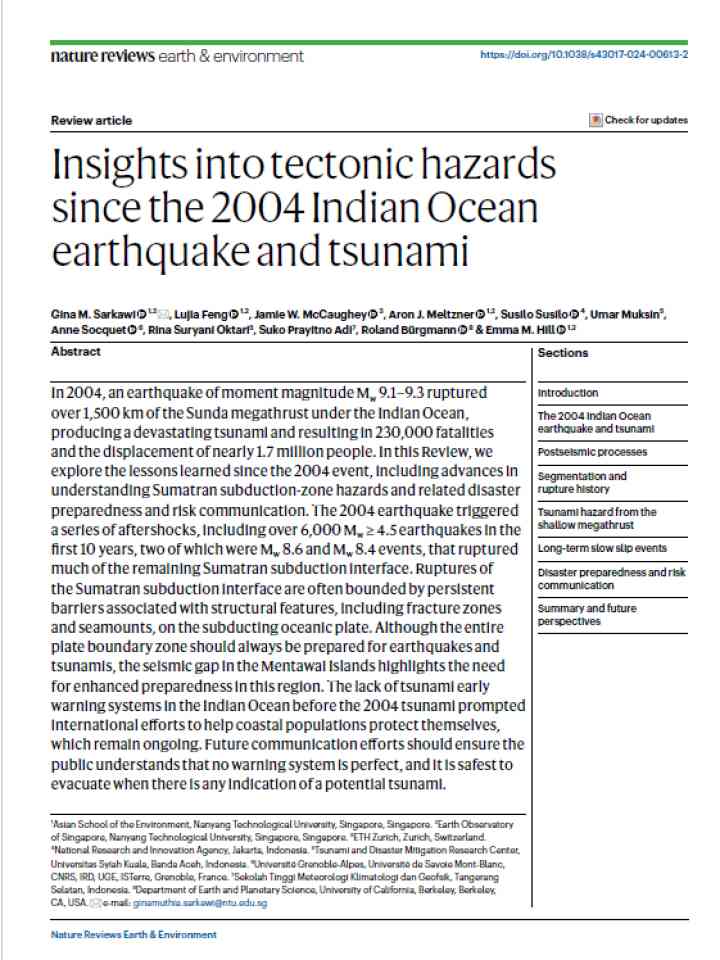Insights into tectonic hazards since the 2004 Indian Ocean earthquake and tsunami
In this review, authors explore the lessons learned since the 2004 event, including advances in understanding Sumatran subduction-zone hazards and related disaster preparedness and risk communication. The 2004 earthquake triggered a series of aftershocks, including over 6,000 Mw ≥ 4.5 earthquakes in the first 10 years, two of which were Mw 8.6 and Mw 8.4 events, that ruptured much of the remaining Sumatran subduction interface. The lack of tsunami early warning systems in the Indian Ocean before the 2004 tsunami prompted international efforts to help coastal populations protect themselves, which remain ongoing. Future communication efforts should ensure the public understands that no warning system is perfect, and it is safest to evacuate when there is any indication of a potential tsunami.
Key findings are as follows:
- The 2004 Indian Ocean rupture had the longest length (1,500-1,600 km) and duration (~10 minutes) of any such recorded event. The resulting tsunami had far-reaching global impacts, extending beyond the local communities in Indonesia and surrounding regions.
- Earthquake ruptures of the Sumatran subduction interface following the 2004 event have occurred through stress transfer by the mainshocks or their postseismic responses, including viscoelastic relaxation, afterslip and/or poroelastic rebound.
- Ongoing continental-scale postseismic deformation, following three MW ≥ 8 Sumatran subduction earthquakes that occurred since 2004, is caused by long-lasting mantle relaxation.
- Slow slip events occur along the Sunda megathrust, spanning decades, indicating the need for multidecadal observations to better understand the mechanisms of such events.
- Increased understanding of partitioning of the plate boundary deformation along the Sumatran subduction zone since 2004 has revealed the importance of distributed shearing across the Wharton Basin and the Sumatran Fault Zone.
- Advancements in earthquake and tsunami science since 2004 have prompted improvements in early warning systems and risk communication. However, challenges persist especially at locations near the tsunami source, requiring improved risk communication and integration of local knowledge to enhance community resilience.
Explore further
